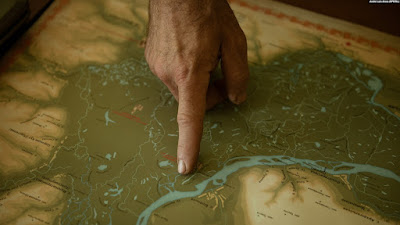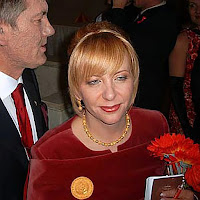 Aaron Mendelsohn,antiquities looting,Antiquities; Looting; Smuggling; Collecting;,Royal-Athena Galleries,Turkey
Aaron Mendelsohn,antiquities looting,Antiquities; Looting; Smuggling; Collecting;,Royal-Athena Galleries,Turkey
 No comments
No comments
The Difficult Calculus of Prosecuting Antiquities Crime : What the Aaron Mendelsohn Case reveals about knowingly possessing looted antiquities
On 2 September 2025, the New York County District Attorney’s Office in Manhattan issued a sharply worded arrest warrant for California collector Aaron Mendelsohn, alleging that he had knowingly purchased and possessed one of the looted Roman Imperial monumental bronze statues plundered from the Sebasteion, a religious sanctuary dedicated to the worship of the Roman emperors as gods, in Bubon.
That warrant paints a picture, not of an unwitting buyer misled by the market attempting to perform due diligence on the object he purchased, but of an individual who, according to prosecutors, understood exactly what he was acquiring when he purchased the statue on 26 May 2007 from Royal-Athena Galleries for USD 1,330,000. Even the object's invoice clearly states the object as “said to be from Bubon, Turkey. Late 2nd - early 3rd Century AD” leaving little ambiguity about the statue's claimed origin.
The warrant states plainly that Mendelsohn bought this “Nude Emperor” statue knowing it had been looted from Bubon, Türkiye in the 1960s, a site famously and illegally plundered, with several of its bronze figures dispersed through the international market for decades. Prosecutors further allege that Mendelsohn exchanged correspondence with art historians, curators, and conservators in which the statue’s origins were plainly discussed. The DA’s conclusions rested not only on their own investigative research but also on email communications that investigators say illustrate, with unusual clarity, the collector’s awareness of the statue’s problematic origins both at the time of purchase and afterward.
While Mendelsohn had once been tentatively been labeled as an “innocent purchaser” early in the New York investigation inquiry, this assessment changed as investigators uncovered additional evidence, including email correspondence that demonstrated the collector's awareness of the bronze's find spot. By the time the warrant was issued, prosecutors stated they were “increasingly convinced he had not acted in good faith.”
Although Mendelsohn’s lawyer, Marcus A. Asner, claimed the emails described in the New York arrest warrant document were taken “out of context” and insisted his client neither knew nor believed the bronze came from Bubon, the documentation prepared by the District Attorney’s Office firmly contradicts that claim. In addition to an invoice which cited the statue's find location as "possibly Bubon", investigators highlighted three instances in which the California philanthropist explicitly acknowledged that the torso had been excavated at Bubon in the 1960s, a date that clearly places the object's illicit export in violation of the Republic of Türkiye's cultural property laws.
To J. Michael Padgett, Mendelsohn wrote:
“It is a 2d century torso about 72 inches high that was exxavated at Boubon, Turkey in the 1960's.”
It is worth mentioning that a year earlier, in 2006, Italian prosecutor Paolo Giorgio Ferri brought charges against the dealer, Princeton University Art Museum’s then-curator Michael Padgett and Mauro Morani a tomb raider and caposquadra who provided plundered material to Edoardo Almagià, an alleged trafficker who as of 1 November 2024 has an outstanding warrant requested by the same New York prosecutor's office.
To Professor John Pollini, USC specialist on Roman bronzes, Mendelsohn wrote:
“I may be acquiring a monumental bronze torso exxavated from a sebasteon in Boubon, Turkey, in the 1960's.”
And to Los Angeles conservator Jerry Podany, Mendelsohn he even named some of the hands the statue had passed through in its early circulation:
Despite the strength of the aforementioned allegations and the clarity of the prosecutors’ position, the case concluded this week not with a criminal trial, but with a negotiated settlement. Under agreed terms, in late September 2025 Mendelsohn agreed to surrender the bronze statue, relinquish all ownership claims to said artefact, and pay for its shipment to Manhattan. In return, prosecutors agreed to withdraw the arrest warrant and suspend criminal prosecution for one year, provided Mendelsohn violates none of the agreement’s terms. This settlement also did not require the California collector to admit the statue was looted, nor did it require any admission of wrongdoing.
That outcome secured the return of this extraordinary Roman imperial masterpiece, which was one of several dozen artefacts handed over to representatives from Turkey on this past Monday at a ceremony in Manhattan. But despite the significance of this restitution victory, the case also highlights a recurring tension in cultural heritage enforcement: prosecutors must balance the urgent need to secure the recovery of looted antiquities with the reality of heavy caseloads, limited resources and the evidentiary complexities of cross-border art crime.
Prosecutors must also weigh the public value of restitution against the practical challenges of pursuing a full criminal trial, challenges that often include jurisdictional disputes, decades-old evidence, and highly lawyered defendants. In some cases, as here, achieving restitution quickly may require accepting settlements rather than adjudicating culpability.
But in this instance, it is important to acknowledge all of the chain of evidence, not just the end agreement. The arrest document sets out detailed allegations of knowing possession, deliberate concealment and even the strategic suggestion of a possible donation of the antiquity despite its clearly problematic origin. Those committed to cultural property protection should not lose sight of this.
When settlements are reached between prosecutors and defense counsel, the public news announcements that follow often focus only on the terms of the final agreement, not on the evidentiary record that compelled it. This is why it is essential to read publicly filed evidentiary documents and warrants in full rather than solely relying solely on news coverage, which tends to diplomatically report the end result, but not always the underlying facts.
Restitution in this case has been achieved, and all parties involved in the equation got something they wanted. But the allegations remain a stark reminder of how looted antiquities can circulate through elite hands, sometimes shielded by the very legal mechanisms that facilitate their return, and of the difficult, often imperfect decisions prosecutors must make to ensure that stolen objects ultimately go home.







































